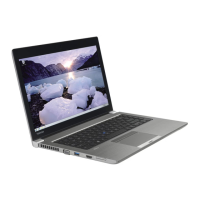
Do you have a question about the Toshiba Tecra Z40 A Series and is the answer not in the manual?
| RAM | Up to 16 GB |
|---|---|
| Processor | Intel Core i5 or i7 |
| Display | 14-inch HD or FHD |
| Storage | SSD |
| Graphics | Intel HD Graphics |
| Ports | USB 3.0, HDMI, VGA, Ethernet, SD card |
| Wireless | Bluetooth 4.0 |
| Operating System | Windows 10 Pro |
Toshiba disclaims liability for use in critical applications where failure could cause harm or damage.
Provides options for reusing, donating, or recycling functional and non-working computers.
Details the meaning of DANGER, WARNING, CAUTION, and NOTE icons for hazard identification.
Advice on choosing an appropriate location and setting up a comfortable workspace.
Tips for maintaining comfort during extended use, focusing on posture.
Guides users through the initial software setup process following OS installation.
Guides on creating bootable recovery media and restoring the system from it.
How to refresh the OS or reset the PC to factory defaults.
Explains the functionality and usage of the AccuPoint pointing device.
Instructions on using the touch pad and connecting external devices.
Instructions on safely cleaning the computer's display panel and exterior case.
Explains keyboard layout and usage, including special keys.
Details on using the computer's battery and its capabilities.
How to check the main battery's current charge status.
Critical safety warnings related to battery conditions like heat, leaks, or unusual odors.
Guides users through the Windows Start screen and accessing charms.
Step-by-step instructions for setting up a wireless network connection.
How to set a supervisor password to restrict access to system settings.
Details how fingerprint logon works, including user enrollment and recognition.
Steps to resolve application freezes using Task Manager.
Explains how to use startup options to troubleshoot and repair the OS.
Solutions for issues where the battery fails to charge or its runtime is reduced.
Lists system functions controllable via TOSHIBA Function keys.



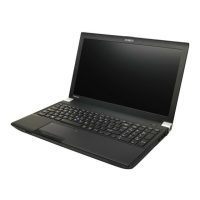


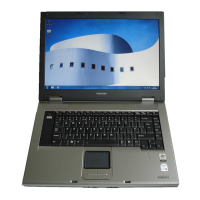

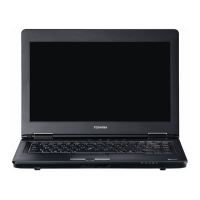

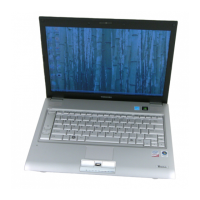
